Nintendo Labo review – in pictures
Forget the old-fashioned looks – this is a new frontier for kid-friendly gaming...
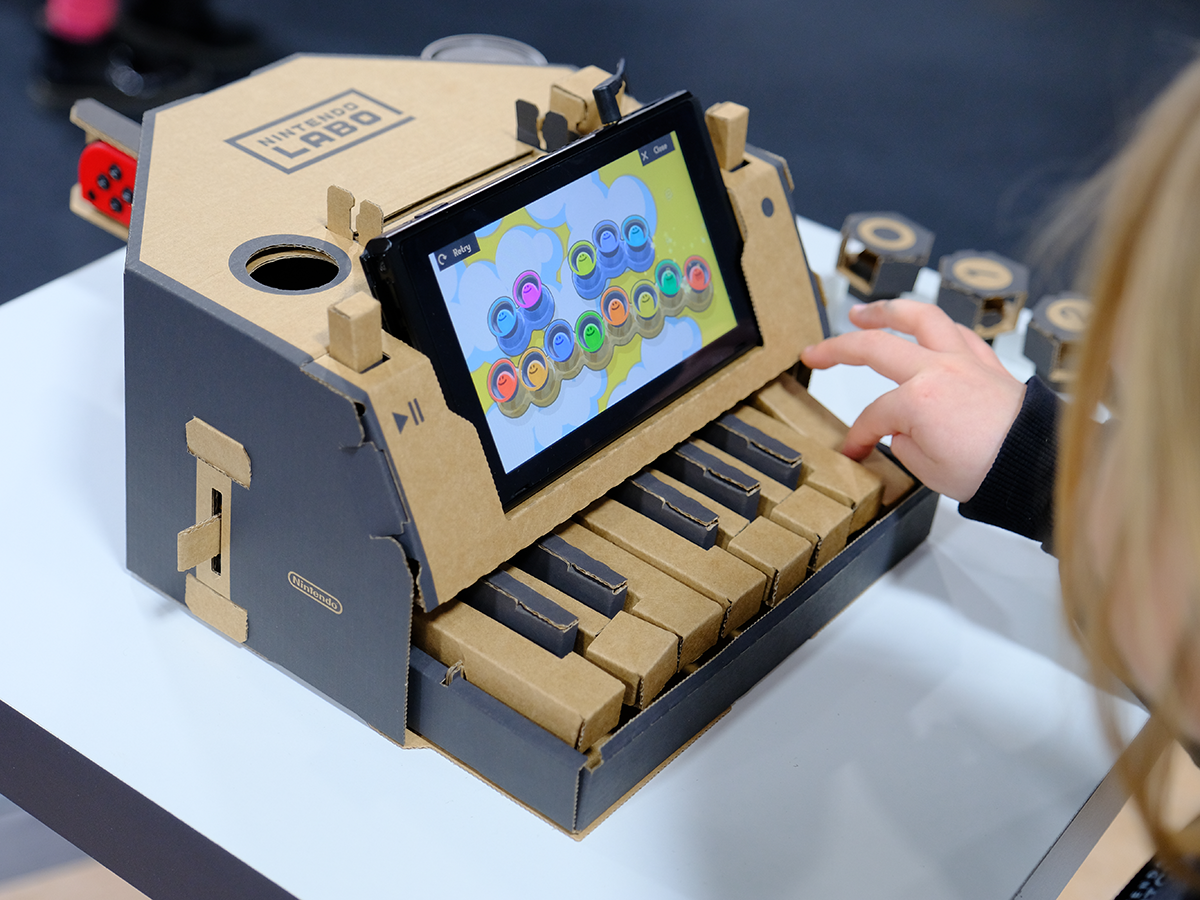
BACK TO BASICS
Fact: Nintendo was originally founded as a playing cards company back in 1889. Of course, since the late 1970s it’s focused on video games, but even as recently as 1974 one its lines featured intricate paper craft models of vehicles, buildings, animals and more. It was called, simply and elegantly, Paper Model – and 39 sets were produced prior to Nintendo fully committing to interactive electronics with 1983’s Famicom (or the NES, as we know it). With its new Labo range, though, Nintendo is reconnecting with these fold ‘em up roots, albeit while also keeping things current with all the cardboard designs reliant on the Switch console to truly come to life.
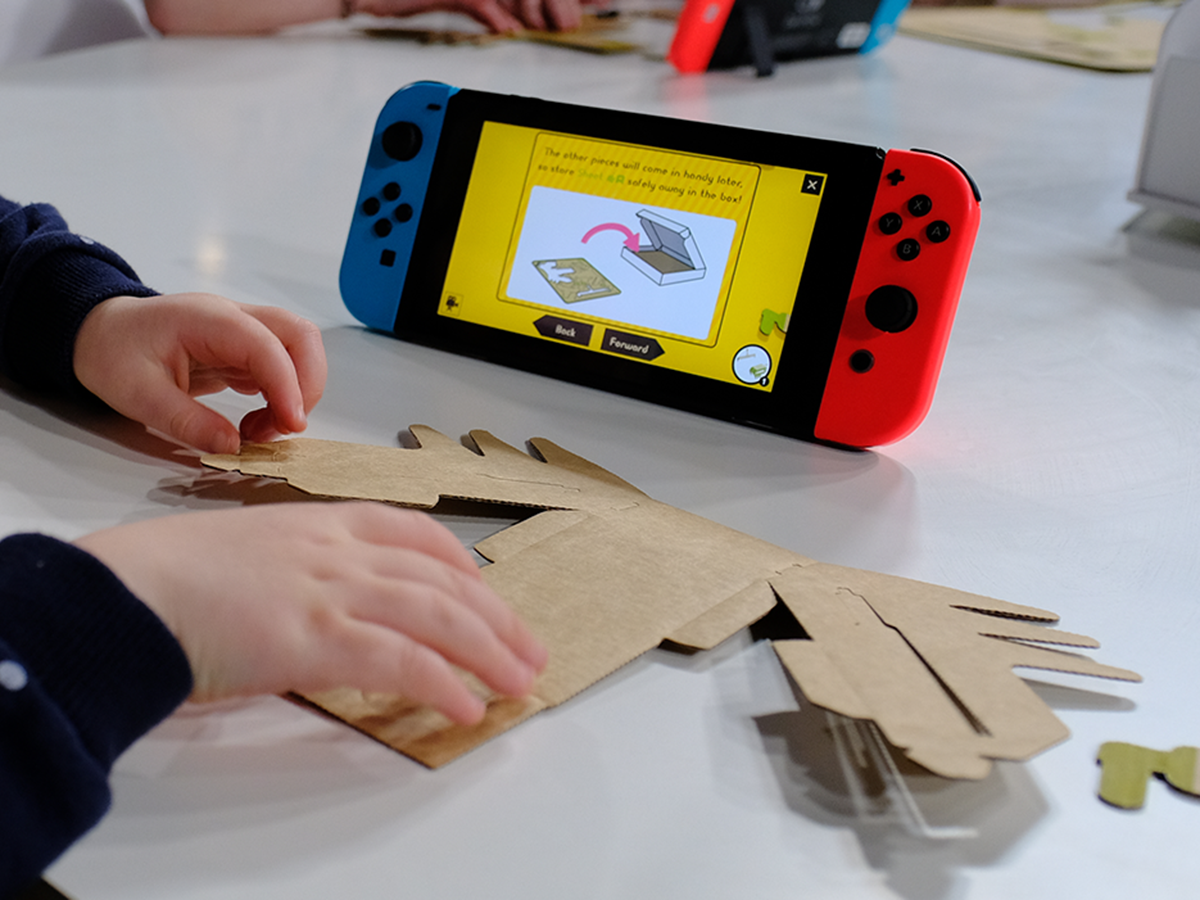
UNLIMITED POSSIBILITIES
The basic concept is simple: you create gaming accessories out of bits of cardboard, then use them together with the Switch to play, play and play some more. But that simplicity hides a plethora of possibilities both in gaming and, if your children are so inclined, basic object-oriented coding.
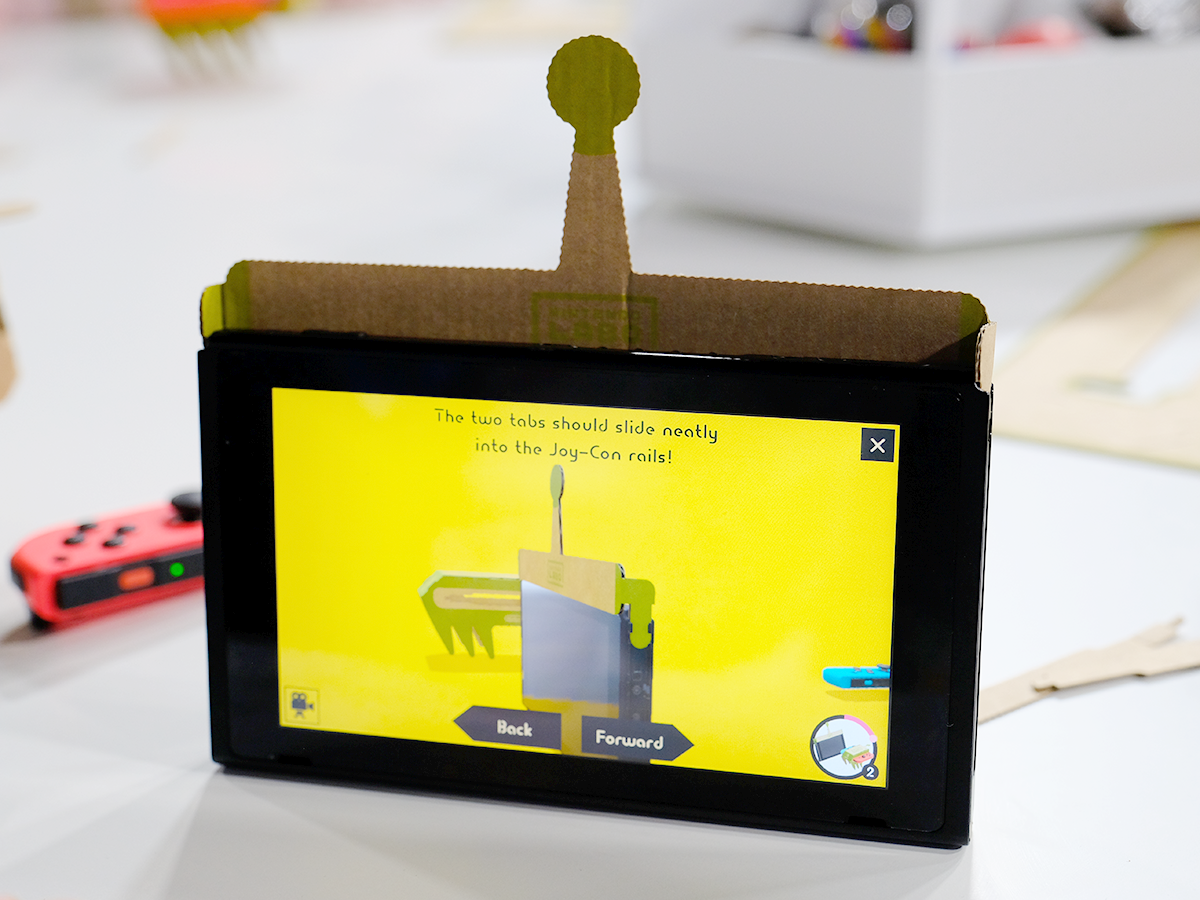
WHAT IS IT?
Labo is based on three core ideas: make, play, and discover. Which is to say that each set contains cardboard to let you ‘make’ physical toys, aka Toy-Cons, game software to turn these contructions into specialised controllers, and seemingly endless opportunities to turn the technology to your own, imaginative advantage. There are two bundles available at launch: the Variety Kit, which lets you build an RC car, house, fishing rod, piano and motorbike, and the Robot Kit – which gives you all you need for a really cool Iron Man-style robo suit.
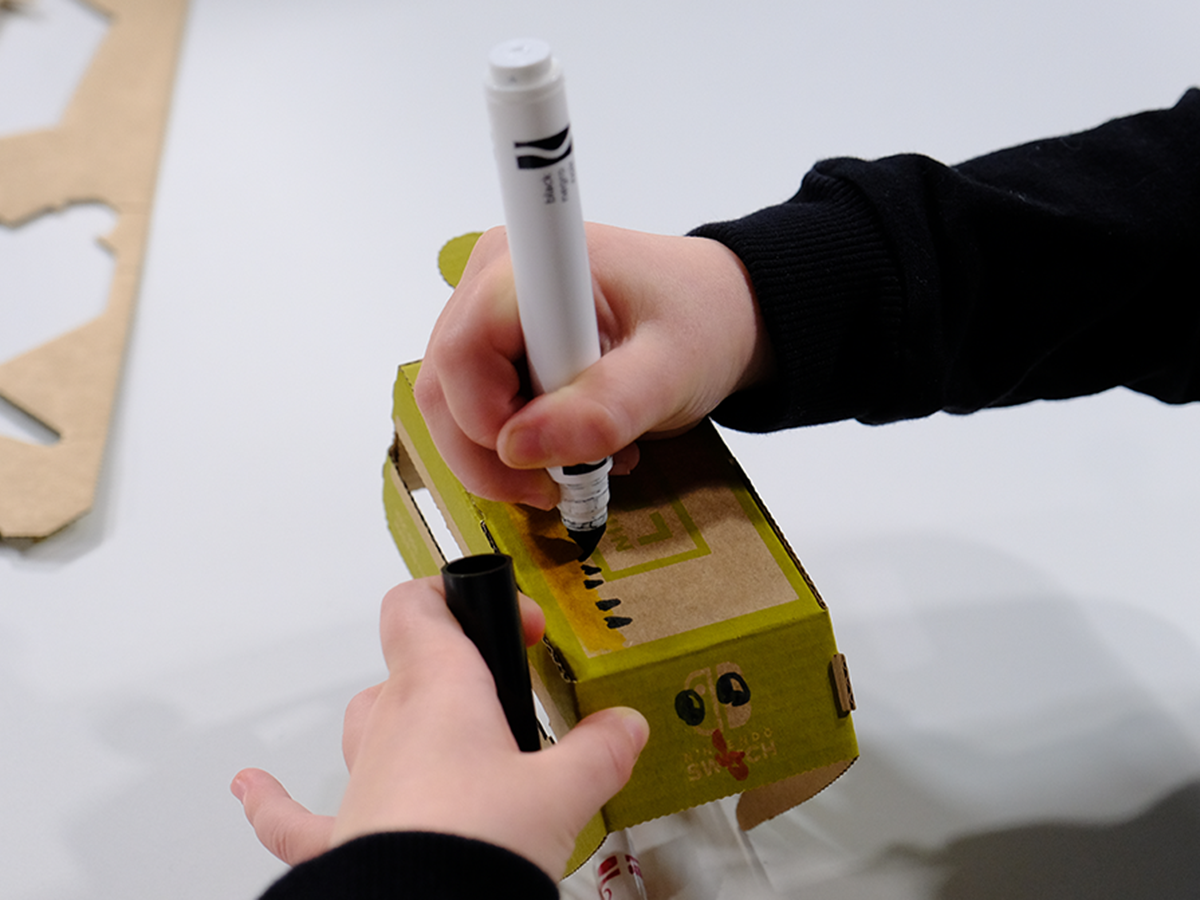
PROGRAM AND BUILD
Once you’re done with the limited games on offer, you can use Labo’s Toy-Con Garage mode to program your own experiences, using a simple, if not quite intuitive, series of menus, input and output commands, and either pre-made or all-new Toy-Con contraptions. (Nintendo itself has provided a few starter ideas). But this is getting ahead of ourselves: Garage won’t be explored until you’re familiar with how each Toy-Con and its associated game(s) works, and some might never touch it at all. And that’s okay, as what’s on offer, out of the box, is plenty enough entertainment to last a rainy weekend or two.
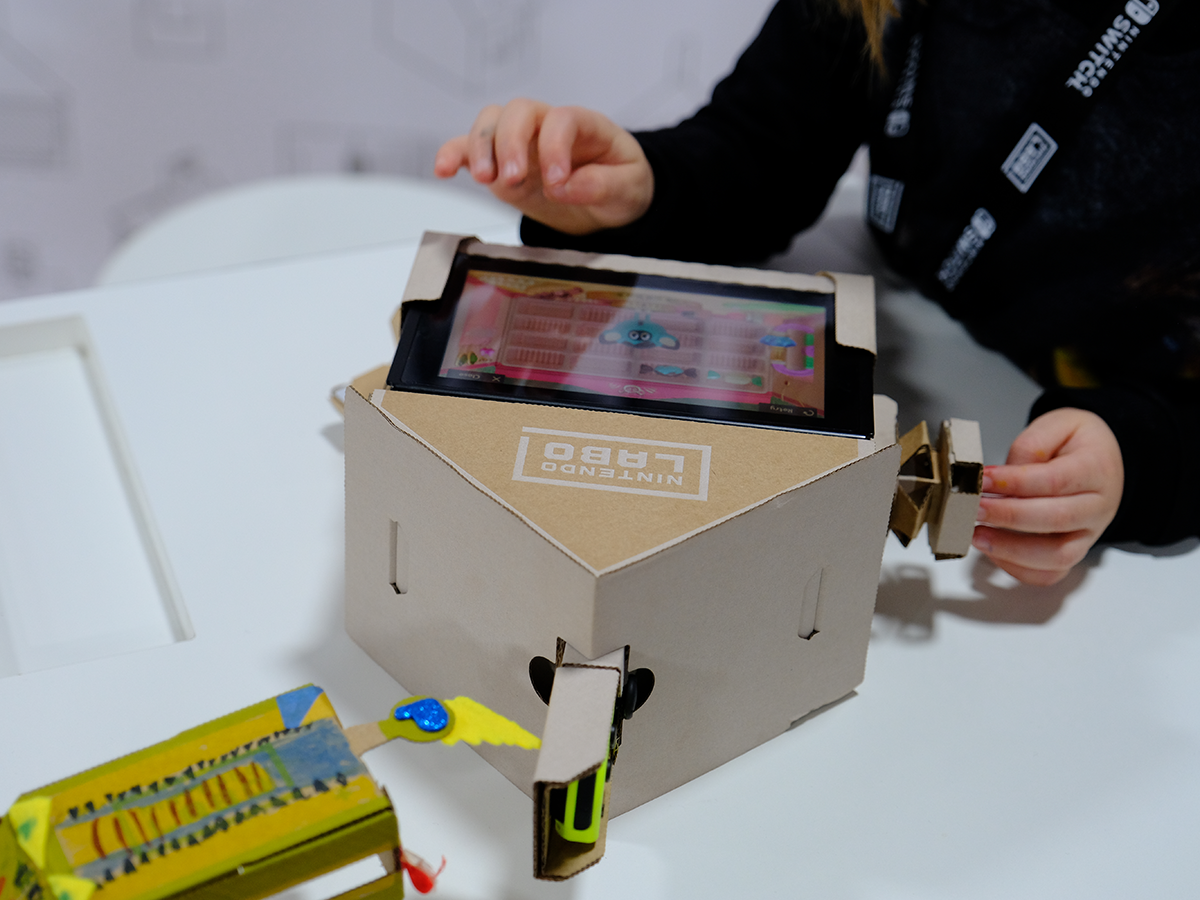
HOW DOES IT WORK?
You start off with a sheet of cardboard containing pre-punched sections which are easily pushed out, and plenty of markings showing you where you need to fold. To further reduce the likelihood of tantrums, a video on the Switch itself gives you step-by-step instructions as you construct your masterpiece. My kids found it easy enough to follow, although some of the folding does need to be done to a fairly exact standard, so be prepared to either give them a hand or make a few adjustments once they’ve finished. With the building done, your kids can decorate their Toy-Cons to their hearts’ content, before moving on to the next stage. And that’s where things get really good. Whether the resulting Toy-Cons will stand up to a month or more of play depends on how heavy-handed you are – or, perhaps more pertinently, how rough with these things your kids are.
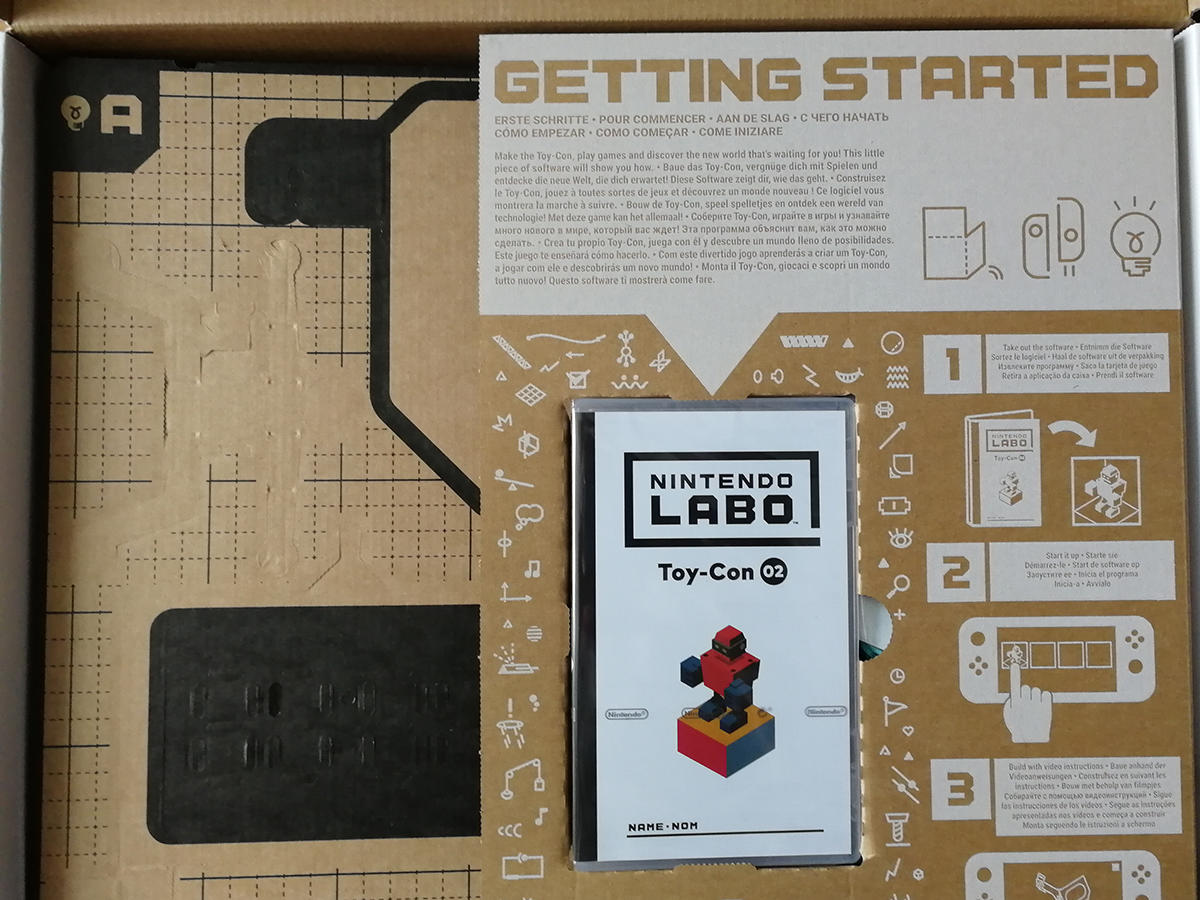
LIMITED DURABILITY
The cardboard is stiff enough to fold and tuck snugly into place, producing some amazingly elegant end products – but one play fight that gets just a little out of control will easily end these things. Thankfully, the flat-packed parts that combine to make up each Toy-Con can be downloaded for free, meaning replacements are just the cost of printing away. And, having had Labo open at home for just a couple of days, in the company of a four-year-old and a seven-year-old, I can see myself needing to back up these already fairly battered models.
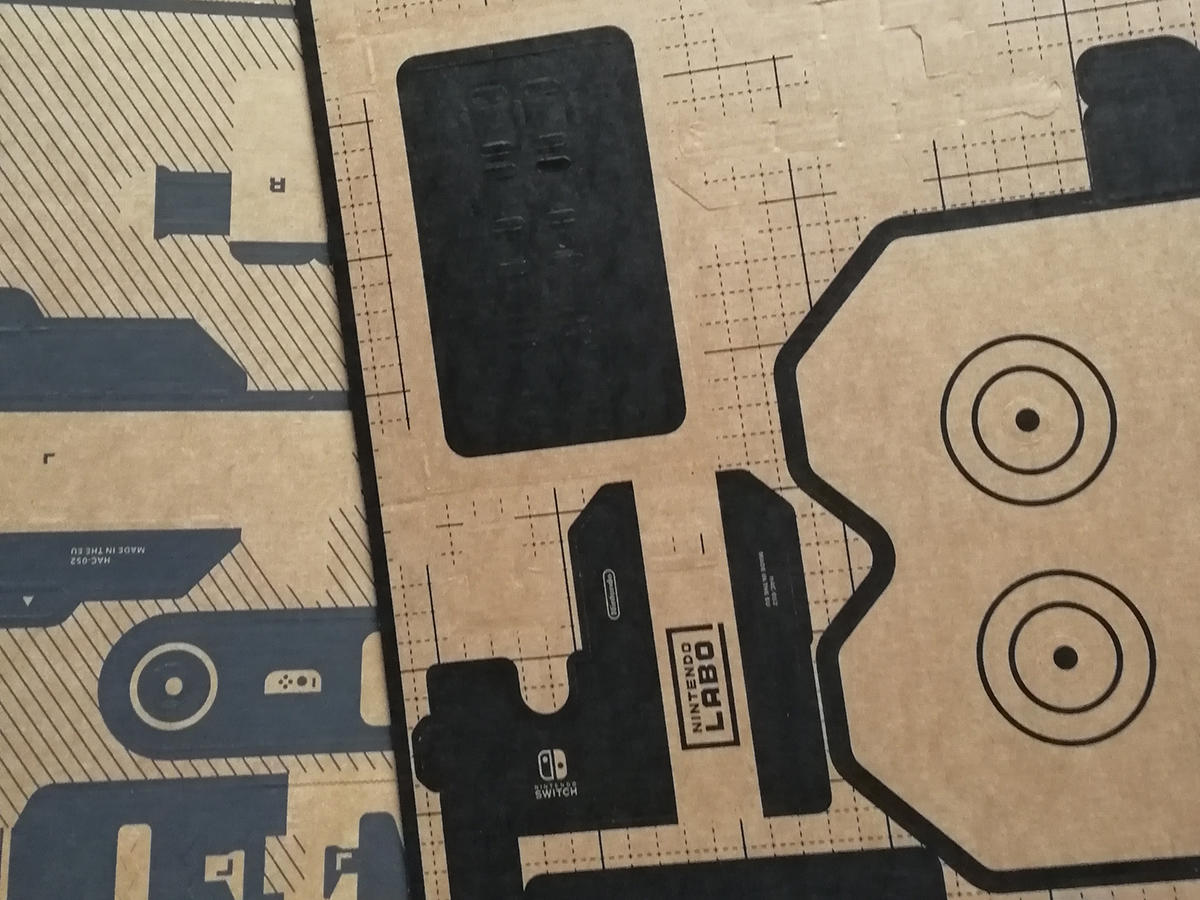
NINTENDO LABO: THE VARIETY KIT
First, the Variety Kit. The crafting element alone of this kit would give you several weekends’ worth of family entertainment, and the games would keep your kids occupied for plenty more. It contains everything you’ll need to make (deep breath) two remote-control “cars” (strange, six-legged vehicles that are moved and steered using the Switch Joy-Cons’ HD Rumble feature), a piano (which doubles as an aquarium-filling fantasy fish creator), a fishing rod, a pair of motorcycle handlebars with working throttle, and a house with open windows, through which you thrust cranks and buttons to terrorise its furry occupant.
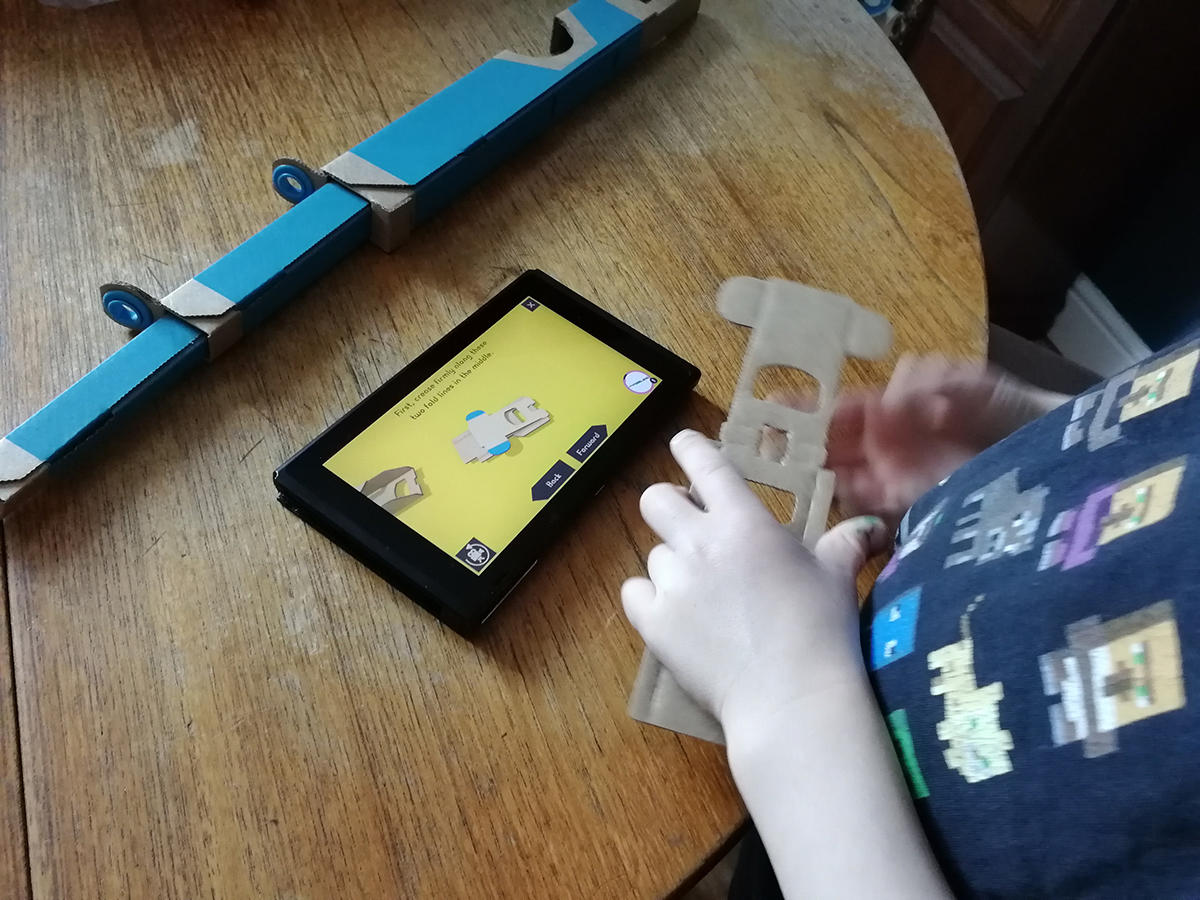
NINTENDO LABO: THE ROBOT KIT
Hands up, while I played this at Nintendo, I’ve not had the time yet to complete my own at-home assembly. Upon starting a kit, you’re told how long each build will take – and the robot one is a good three to four hours. Between my wife and kids and I, we’re not quite there yet. People need their sleep! But, thankfully, I have previously stomped around in its futuristic city, smashing down skyscrapers and pounding UFOs, and it’s definitely a blast. One Joy-Con sits in your visor, switching perspective between first- and third-person depending on whether it’s up or down; and the other in a quite sizeable backpack, reading the movements of weights that are attached, via strings, to the player’s hands and feet.
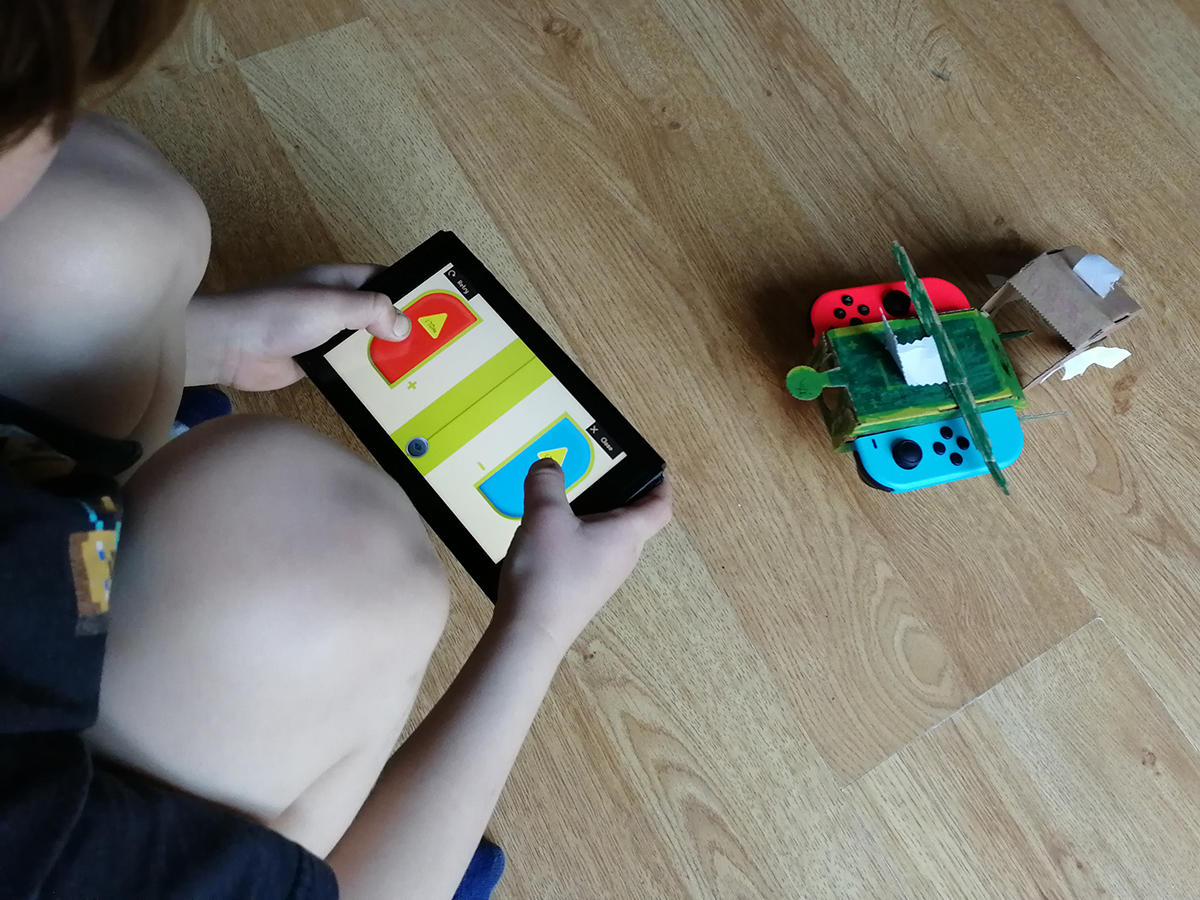
ROBOT ROCK
Punch and your on-screen robot does the same. Sort of stomp on the spot and it’ll march forwards. Lean to the left, and it’ll move that way; right, and the same. Squat down, and you turn into a car! Stretch out your arms, and your robot flies! For the five minutes I played, I loved it. But, I’m not yet sure how that one experience fleshes out to anything more than a brief flurry of destructive fun. There are more challenges to tackle than the tower-collapsing one I played through, and a lot of in-game customisation (on top of the option to decorate your backpack however you like). There’s also a fitness-friendly music mode – dance along wearing the kit, and your Switch will calculate how many calories you’re burning. But unlike the variety option, the robot kit is just that, and that alone: you make a robot suit out of card, and use it to be a robot in a game. And if that’s enough for you, cool.
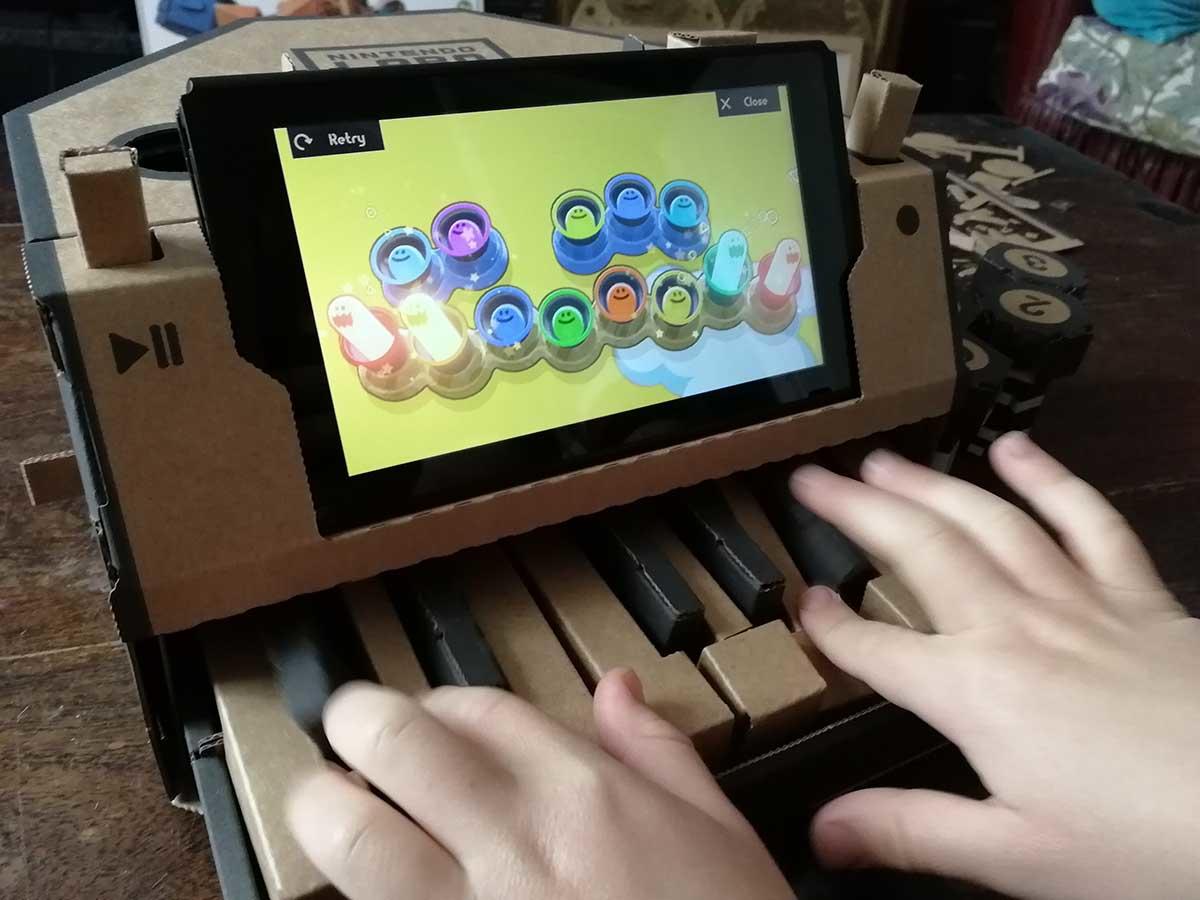
DISCOVERY AT ITS CORE
Nobody would dream of launching a child-focused electronic product these days without including a coding element, and Labo is no exception. Actually, coding is maybe overdoing it here – your kids can’t break out the C++ and start reprogramming it – but the Discover app will certainly get them on the right track. Essentially, Labo lets you create your own custom recipes for games and control modes. You can, for instance, set it up it so that the RC car can navigate around using the Joy-Con’s IR camera. Or so that touching the Switch’s screen will cause the fishing rod to vibrate. Or you can create new sounds for the piano. And so on.
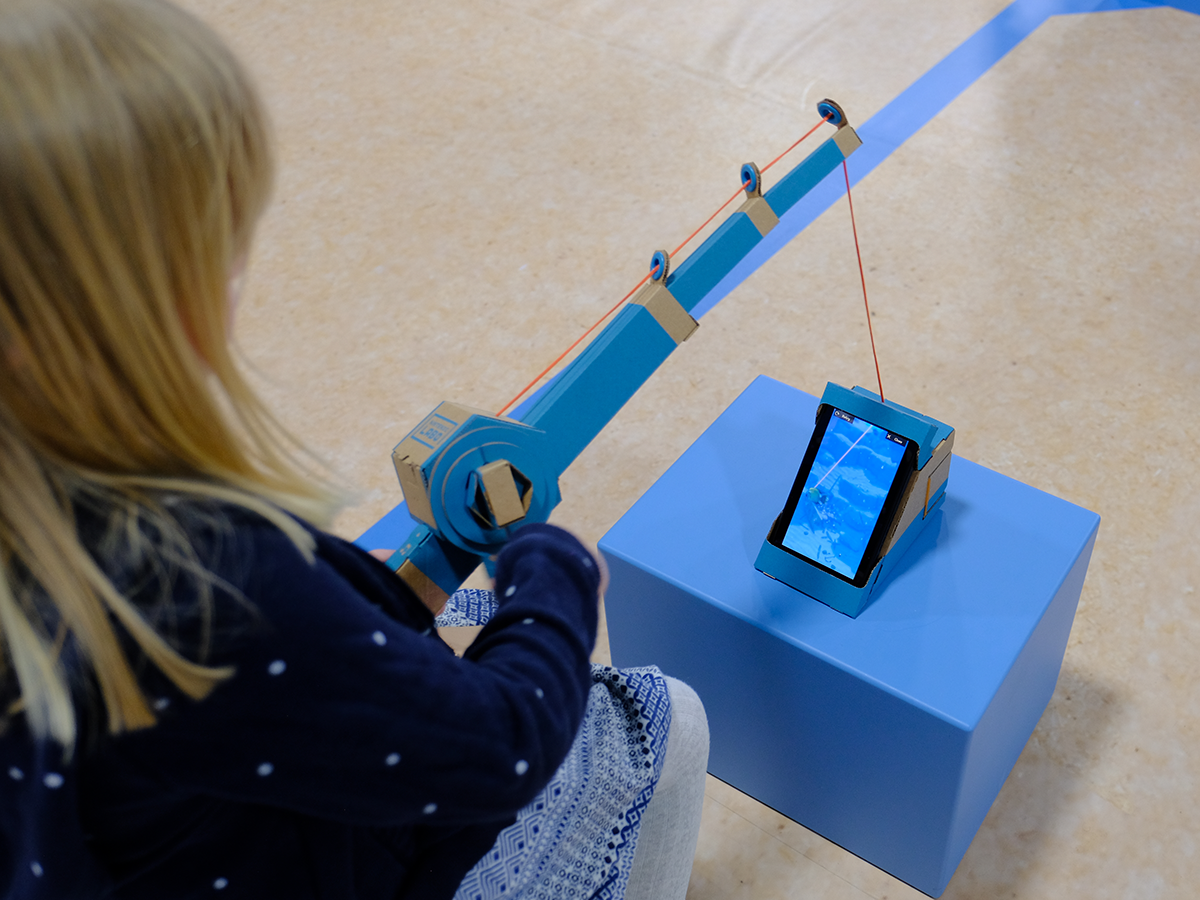
WHAT DID THE KIDS THINK?
Tess (8): “I really liked it, because you can get creative. I enjoyed the making bit because you can imagine what you want them to look like, then colour them in and decorate them. My favourite game was either the motorbike or the robot. I really liked the robot, because it was sort of another way to exercise! And the game was really good too.” Lyra (8): “I think that it’s cool because you can imagine new toys then build them using the Joy-Cons. I liked the playing the games more than building them, but I did like building them too. My favourite game was the robot one, but the house one was also good, because you could easily transform it into different games. I would love to have it at home.”
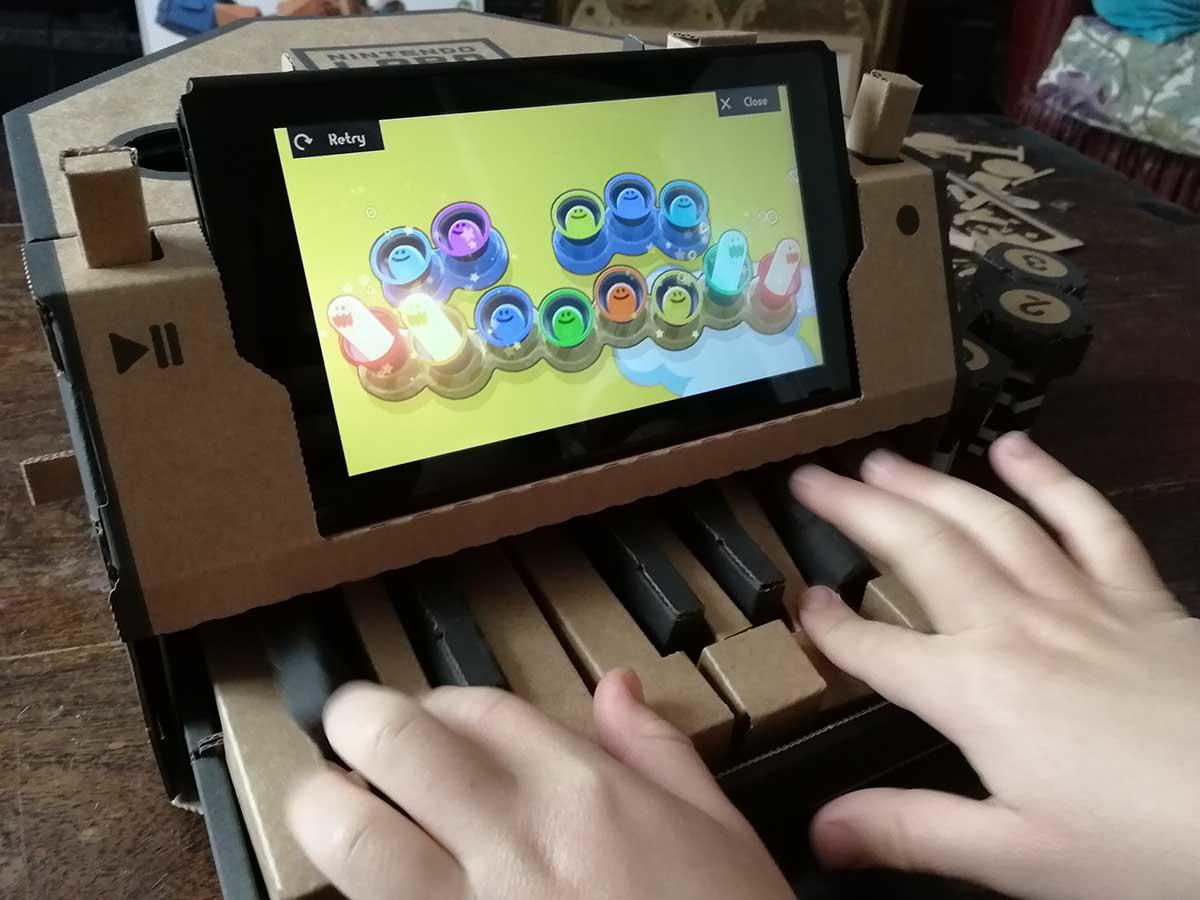
LONG TERM POTENTIAL
Labo’s true long-term potential might be outside of the home and in classrooms, such is the programming foundations that its Garage mode can provide. Right now, as a strictly entertainment proposition, it’s undeniably impressive of design and a great deal of fun in short bursts. The wonder of seeing these sheets come together to form such wonderful toys isn’t getting old, and represents another string for the bow of that Old Nintendo Magic (by tapping into some properly old Nintendo magic).
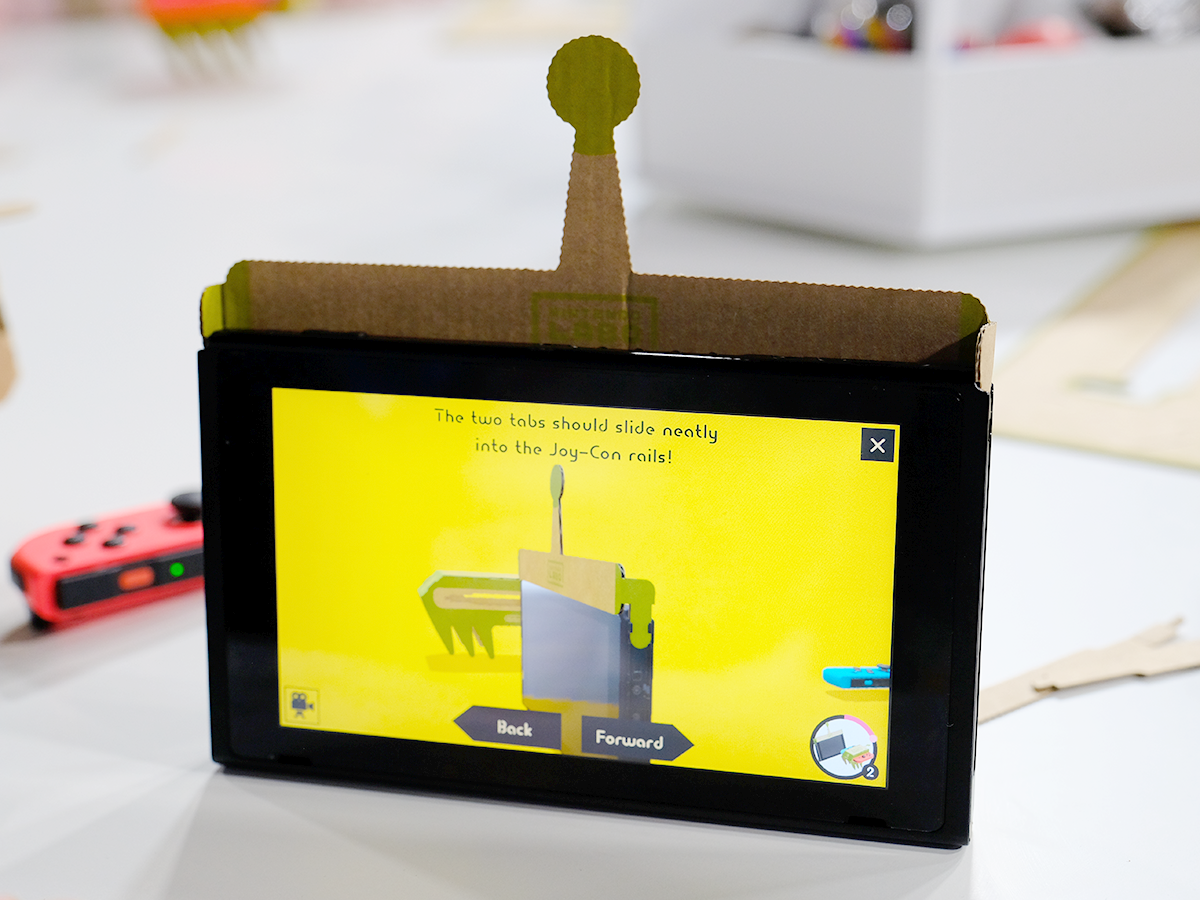
A FASCINATING EVOLUTION
But I’m not yet certain what’ll break first: all of this cardboard, or my kids’ enthusiasm to pick any of it up. There’s no doubt, too, that the asking price feels like a lot for what can appear to be a stack of cardboard. Of course, you’re paying for much more: the games, the hugely intelligent and inventive designs, the joy of making. But that will be an obstacle for some, and all the freely downloadable cut-outs in the world won’t make paying almost $70 for the robot kit any less of a challenge for parents (or anyone) on a tight budget. As a fascinating update to Paper Model, though, and completely unpredictable continuation of Nintendo’s against-the-grain gaming evolution, Labo is a remarkable achievement and a real blast.


